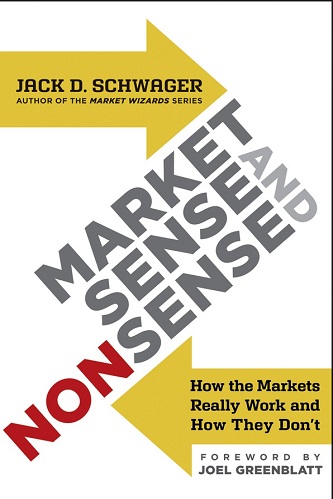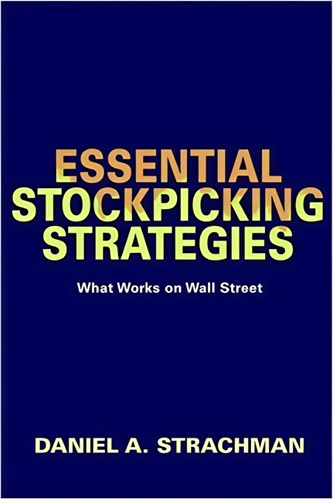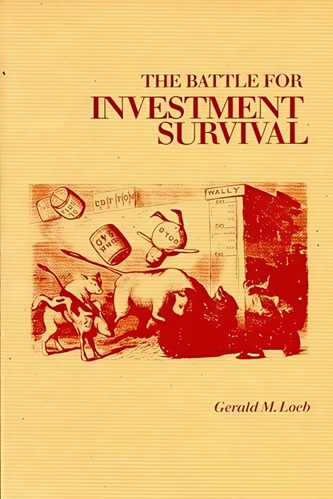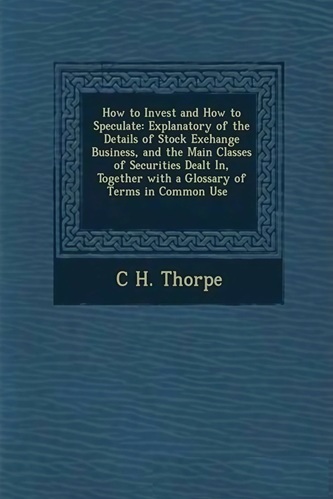Market Sense and Nonsense: How the Markets Really Work (and How They Don’t)
$15.81
| Author(s) | |
|---|---|
| Format |
|
| Pages |
250 |
| Publication Year |
2013 |
In Market Sense and Nonsense, Jack Schwager, bestselling author of the Market Wizards series, takes aim at some of the most pervasive market precepts, money management misconceptions, and irrational investor behaviors. From the theory of efficient markets to buying in up markets and selling in down markets, Schwager turns each misguided idea on its head, one at a time. Supported by a wealth of well-documented historical evidence and a healthy dose of common sense, he exposes the truth about the cherished assumptions and fallacious thinking at the core of some of the most respected investment theories and models and explores many common investor errors.
Author’s Note:
Many years ago when I worked as a research director for one of the major Wall Street brokerage firms, one of my job responsibilities included evaluating commodity trading advisors (CTAs). One of the statistics that CTAs were required by the regulatory authorities to report was the percentage of client accounts that closed with a profit. I made the striking discovery that the majority of closed accounts showed a net loss for virtually all the CTAs I reviewed—even those who had no losing years! The obvious implication was that investors were so bad in timing their investment entries and exits that most of them lost money—even when they chose a consistently winning CTA! This poor timing reflects the common investor tendency to commit to an investment after it has done well and to liquidate an investment after it has done poorly. Although these types of investment decisions may sound perfectly natural, even instinctive, they are also generally wrong.
Investors are truly their own worst enemy. The natural instincts of most investors lead them to do exactly the wrong thing with uncanny persistence. The famous quote from Walt Kelly’s cartoon strip, Pogo, “We have met the enemy, and it is us,” could serve as a fitting universal motto for investors.
Investment errors are hardly the exclusive domain of novice investors. Investment professionals commit their own share of routine errors. One common error that manifests itself in many different forms is the tendency to draw conclusions based on insufficient or irrelevant data. The housing bubble of the early 2000s provided a classic example. One of the ingredients that made the bubble possible was the development of elaborate mathematical models to price complex mortgage-backed securitizations. The problem was that there was no relevant data to feed into these models. At the time, mortgages were being issued to subprime borrowers without requiring any down payment or verification of job, income, or assets. There was no precedence for such poor-quality mortgages, and hence no relevant historical data. The sophisticated mathematical models failed disastrously because conclusions were being derived based on data that was irrelevant to the present circumstances. Despite the absence of relevant data, the models served as justification for attaching high ratings to risk-laden subprime-mortgage-linked debt securitizations. Investors lost over a trillion dollars.
Drawing conclusions based on insufficient or inappropriate data is commonplace in the investment field. The mathematics of portfolio allocation provides another pervasive example. The standard portfolio optimization model uses historical returns, volatilities, and correlations of assets to derive an optimal portfolio—that is, the combination of assets that will deliver the highest return for any given level of volatility. The question that fails to be asked, however, is whether the historical returns, volatilities, and correlations being used in the analysis are likely to be at all indicative of future levels. Very frequently they are not, and the mathematical model delivers results that precisely fit the past data but are worthless, or even misleading, as guidelines for the future—and the future, of course, is what is relevant to investors.
Market models and theories of investment are often based on mathematical convenience rather than empirical evidence. A whole edifice of investment theory has been built on the assumption that market prices are normally distributed. The normal distribution is very handy for analysts because it allows for precise probability-based assumptions. Every few years, one or more global markets experience a price move that many portfolio managers insist should occur only “once in a thousand years” or “once in a million years” (or even much rarer intervals). Where do these probabilities come from? They are the probabilities of such magnitude price moves occurring, assuming prices adhere to a normal distribution. One might think that the repeated occurrence of events that should be a rarity would lead to the obvious conclusion that the price model being used does not fit the real world of markets. But for a large part of the academic and financial establishment, it has not led to this conclusion. Convenience trumps reality.
The simple fact is that many widely held investment models and assumptions are simply wrong—that is, if we insist they work in the real world. In addition, investors bring along their own sets of biases and unsubstantiated beliefs that lead to misguided conclusions and flawed investment decisions. In this book, we will question the conventional wisdom applied to the various aspects of the investment process, including selection of assets, risk management, performance measurement, and portfolio allocation. Frequently, accepted truths about investment prove to be unfounded assumptions when exposed to the harsh light of the facts.
Contents:
- Expert Advice
- The Deficient Market Hypothesis
- The Tyranny of Past Returns
- The Mismeasurement of Risk
- Why Volatility Is Not Just about Risk, and the Case of Leveraged ETFs
- Track Record Pitfalls
- Sense and Nonsense about Pro Forma Statistics
- How to Evaluate Past Performance
- Correlation: Facts and Fallacies
- The Origin of Hedge Funds
- Hedge Funds 101
- Hedge Fund Investing: Perception and Reality
- Fear of Hedge Funds: It’s Only Human
- The Paradox of Hedge Fund of Funds Underperformance
- The Leverage Fallacy
- Managed Accounts: An Investor-Friendly Alternative to Funds
- Diversification: Why 10 Is Not Enough
- Diversification: When More Is Less
- Robin Hood Investing
- Is High Volatility Always Bad?
- Portfolio Construction Principles
Market Sense and Nonsense: How the Markets Really Work (and How They Don't) By Jack D. Schwager pdf
Only logged in customers who have purchased this product may leave a review.










Reviews
Clear filtersThere are no reviews yet.